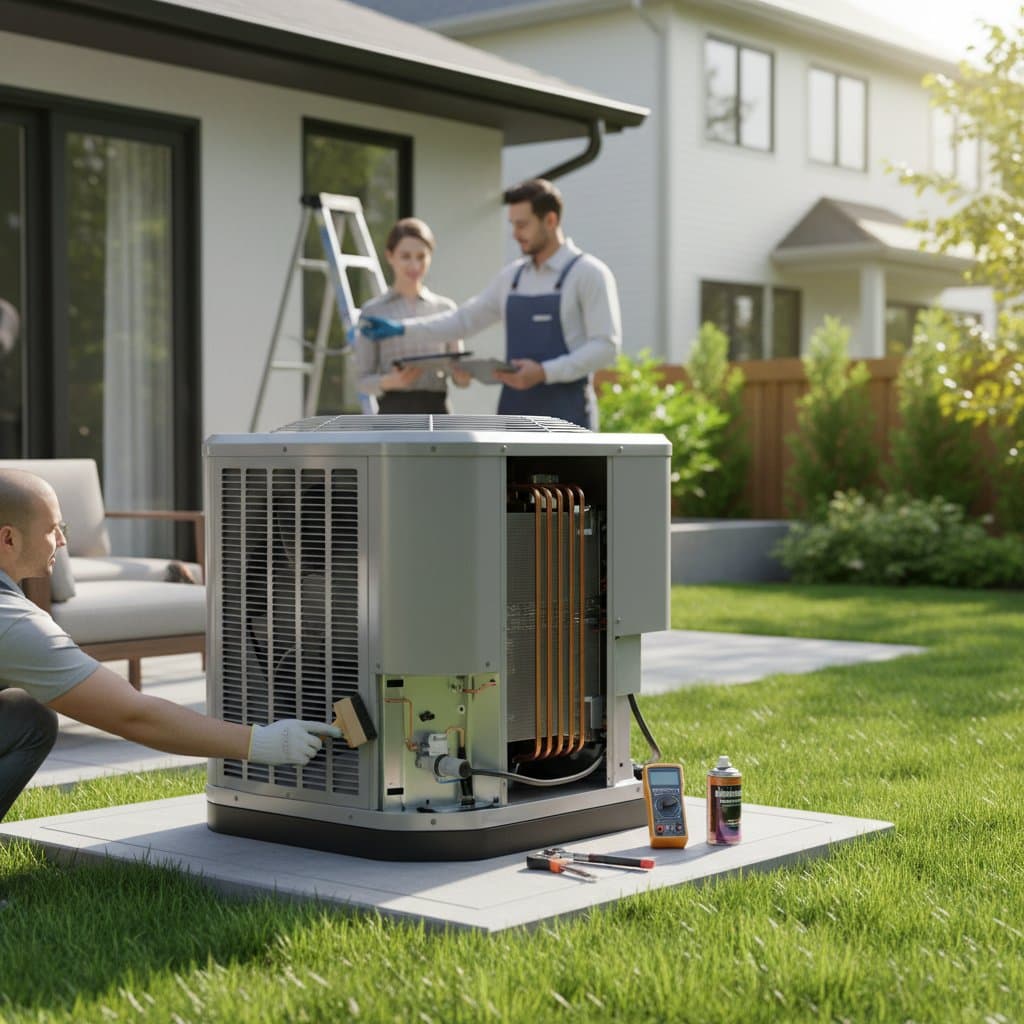Essential May AC Checks for a Breakdown-Free Summer
A reliable air conditioner ensures comfort during the hottest months. In May, homeowners often prepare to activate their cooling systems, only to encounter issues such as reduced airflow, warm output, or unusual sounds. Performing a timely tune-up addresses these concerns, maintains steady temperatures, reduces energy consumption, and prolongs equipment life.
This guide outlines key May maintenance checks to ready your air conditioning system for summer demands. These steps suit both DIY efforts and professional services, helping to sidestep unexpected failures and optimize performance.
Inspect and Replace Air Filters
Clogged filters frequently impair air conditioner efficiency by limiting airflow, increasing strain on the system, and compromising indoor air quality. Begin the maintenance process by locating and removing the existing filter to assess dust accumulation. Replace it if the filter appears discolored or obstructed, selecting a compatible size for your unit.
Professionals advise monthly inspections during high-use periods. A fresh filter enhances energy efficiency by up to 15 percent. For homes with pets or allergy sufferers, opt for pleated filters that capture finer particles effectively.
Clear Debris Around the Outdoor Unit
The outdoor condenser requires unobstructed airflow to dissipate heat properly. Winter accumulation of leaves, soil, and vegetation often surrounds the unit. Gently sweep or brush away debris within a two-foot radius of the base, and prune nearby shrubs to maintain clearance.
Straighten any bent fins with a fin comb if necessary. Refrain from using high-pressure water on the coils to prevent damage; a gentle hose rinse suffices for cleaning. Regular attention to the condenser improves cooling capacity and minimizes repair needs.
Verify Thermostat Functionality and Settings
Prior to peak heat, confirm that the thermostat operates accurately. Consider upgrading from a manual model to a programmable or smart version for better energy management. Program it to raise the temperature slightly during absences and lower it upon return.
Test accuracy by comparing the thermostat display to a separate thermometer. If discrepancies exceed two degrees, adjust or replace the device. This adjustment prevents excessive cycling and unnecessary energy use.
Inspect and Clean the Condensate Drain
Blockages in the condensate drain line often lead to leaks around the indoor unit, as algae and debris cause water backups. Identify the drain, typically a PVC pipe, and flush it with a cup of vinegar to dissolve buildup. Clear persistent obstructions with a wet-dry vacuum if water does not drain smoothly.
Routine cleaning averts moisture-related issues and mold development. Many neglect this until signs like water spots or odors appear. A brief May inspection avoids substantial water damage throughout the season.
Examine Ductwork for Leaks
Leaks in ductwork allow cooled air to escape, elevating utility expenses. Check accessible ducts in attics, basements, or crawl spaces for gaps, punctures, or damaged insulation. Apply foil tape or mastic sealant to minor leaks; engage a technician for extensive evaluations, including pressure tests.
Effective sealing boosts system efficiency by up to 20 percent, yielding consistent temperatures and reduced bills.
Test System Performance
Once maintenance tasks conclude, operate the air conditioner for a minimum of fifteen minutes. Monitor for odd noises and assess airflow strength and coolness at vents. Short cycling or failure to achieve set temperatures signals potential problems, such as low refrigerant, soiled coils, or capacitor faults.
Basic tests fall within DIY scope, but refrigerant handling and electrical work demand licensed expertise to avoid warranty invalidation or injury. Professionals measure refrigerant, secure connections, and evaluate overall operation.
Schedule a Professional Tune-Up
An annual expert inspection identifies subtle defects early, preventing major expenses. Certified technicians perform comprehensive services like coil cleaning, refrigerant verification, thermostat adjustments, and safety reviews, often at seasonal rates.
Homeowners report that such maintenance recoups costs via decreased energy use and reliability. Consistent care extends system longevity by years, supporting sustained savings.
Track Maintenance for Optimal Performance
Well-maintained air conditioning safeguards air quality, stabilizes costs, and provides reassurance amid summer heat. Maintain a log of filter replacements, cleaning sessions, and professional visits to monitor trends and inform future decisions.
This record proves useful for troubleshooting, upgrades, or property transactions, ensuring the system delivers value over time.





